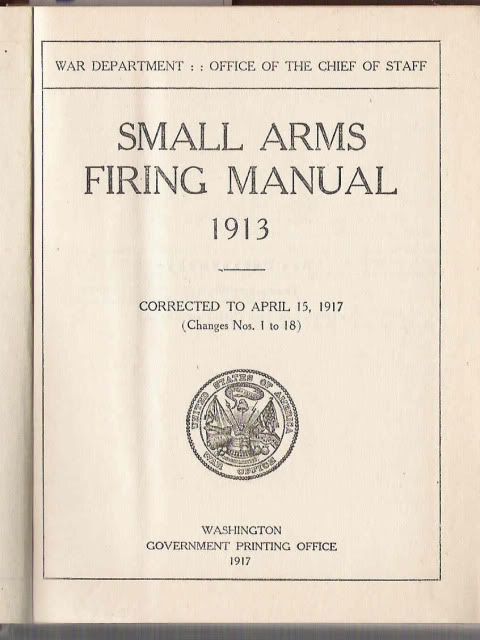I have long believed that it was considered a satisfactory arrangement to carry a Colt (they were all Colts then) with the hammer down on a loaded chamber, although others though differently. I have never found it a difficult thing to cock one without any more fumbling than flicking off the thumb safety but I've mentioned before that I'm probably all fingers when it comes to thumb safeties. I really don't understand that either, since I think it's the same thumb I use to cock the hammer. I will admit that lowering the hammer takes care.
I have a 1913 small arms manual, written by people who were around when the M1911 was in development.
They carried the M1911 with a round in the chamber and the hammer down in the flap holster. The manual is very insistent on carrying with the hammer down. In the flap holster.
This would have been totally natural to troops familiar to the Colt SAA. You unholstered your pistol and thumb cocked it.
Early M1911's had wide hammer spurs and the grip safety was out of the way. Modern beavertails make thumb cocking just about impossible with the firing hand.
The thumb safety was put there at the insistence of the Cavalry who wanted a way to make the pistol safe with one hand. They wanted it in case of an "unruly horse".
People today don't ride horses like they used to, but documents of the period indicate a high number of accidental discharges with revolvers due to jumpy horses.
I think enough accidental discharges happened by guys lowering the hammer and losing it, that by the time you get to WWII, you put the thumb safety on before putting the pistol in your flap holster.
The Cooperites all refer to the WWII manuals in their claims that John Browning designed the M1911 to be carried cocked and locked. Not so.
I have never felt comfortable carrying cocked and locked, especially after having the thumb safety bumped off. This has happened to more people than just me.
The thumb safety can also be bumped "on" when you want it "off". I remember an article by Clint Smith where at his facility, Nationally ranked shooters have accidentally bumped their safeties "on" when going through the combat courses.
I accidently bumped a Les Baer safety on. The safety was real easy to move, the gun recoiled more than I expected, and the next round would not go off. Turned out I bumped the safety on. That was a surprise and I was glad I was only paper punching.
So, not only do I not like carrying cocked and unlocked, I don't think highly of thumb safeties as they can be "off" when you want them "on", and "on" when you want them "off".



